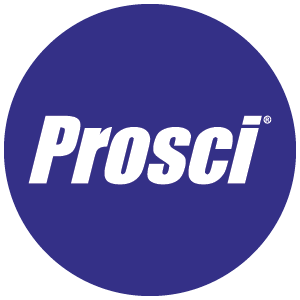Understanding the Types of Change Management Strategies

7 Mins
Updated: June 13, 2025
Published: June 10, 2025

Change management is an enabling framework for managing the people side of change. Managing the people side of change effectively requires a structured change management strategy and plan to guide the process.Choosing the right model for planning change is critical to aligning initiatives with organizational goals, providing a structured approach, and managing risk effectively. In this guide, we’ll explore the types of change management strategies, the benefits of choosing an effective change implementation strategy, and tips for overcoming challenges.
Types of Organizational Change in Business
The concept of change occurs across three distinct phases on an organizational and individual level. Understanding the gap between the current and future state and how much effort it will take to move from one to the other defines whether a change is incremental or radical.

Incremental changes focus on small improvements. They typically require less change management because you ask employees to take a smaller step from what they know and are comfortable with.
Radical (or transformational) changes are more substantial and potentially disruptive than incremental changes. The gap between the current and future state is much larger, and more change management is required to support employees as they make the shift. Large-scale technological changes, digital transformations, and mergers are common examples.
Both incremental and radical changes impact people. Changes that don’t have a people-side impact and don’t require people to adopt and use them don’t require organizational change management.
Change Management Models for Organizations
Choosing the right change management model is key to successfully guiding your organization through change. Let’s examine some of the types of change management models businesses use.
Lewin’s Change Management Model
Kurt Lewin’s Change Management Model is a simple approach and one of the earliest in change management. Lewin’s Change Theory is structured into three phases: Unfreeze, Change, and Refreeze. This high-level model provides a straightforward plan to guide simple business transitions.
Kotter’s 8-Step Change Model
John Kotter’s 8-step change model offers a conceptual framework for managing change through a top-down approach designed to create urgency and build momentum. It provides a high-level, step-by-step framework for leaders to move through.
McKinsey 7-S Framework
The McKinsey 7-S model emphasizes alignment across seven key internal elements of an organization for successful change, categorized into “hard” and “soft.” The “hard” elements include strategy, structure, and systems. The “soft” elements include shared values, skills, style, and staff. This model focuses on coordinating these elements to make a cohesive change management strategy for smooth business transformations.
Kubler-Ross Change Curve
The Kubler-Ross Change Curve by Elisabeth Kübler-Ross, adapted from the stages of grief, helps change teams understand emotional responses during organizational change. This model allows organizations to manage changes with deep or negative emotional employee impacts, such as company layoffs.
The Prosci Methodology
The Prosci Methodology is a structured, adaptable and repeatable approach based on 25 years of research that harnesses the power of the people side of change. With the ADKAR Model for individual change at its core, the Prosci Methodology is the most comprehensive approach mentioned in this section. Our methodology comprises:
- Prosci ADKAR Model – designed to enable successful individual change through five building blocks: Awareness, Desire, Knowledge, Ability and Reinforcement
- Prosci 3-Phase Process – a structured process for achieving change at the organizational level consisting of three phases: Phase 1 – Prepare Approach, Phase 2 – Manage Change, Phase 3 – Sustain Outcomes
- Prosci Change Triangle (PCT) Model – comprised of four aspects that are critical for successful change: success, leadership/sponsorship, project management and change management
The comprehensive Prosci Methodology approach enables success by covering all key individual and organizational change aspects, and resources and plans to support them. It emphasizes the human side of change to ensure employees feel equipped and supported for success throughout the change management process.

Key Elements in Change Management Strategies
While change management frameworks differ in complexity and approach, effective strategies combine key elements and plans that support people, processes, and outcomes. The following components form the backbone of comprehensive and transformative frameworks for teams.
- Leadership and sponsorship – Executives and senior leaders are essential as primary sponsors of change. Prosci research demonstrates that sponsors are so critical to change efforts that they can make or break a project or initiative. Supporting these key stakeholders and equipping them to fulfill their roles drives change success.
- Integration of change management and project management – Aligning change management with project management ensures that the technical and people sides of change are addressed. Prosci benchmarking research shows that 47% of participants who integrated project management and change management reported meeting or exceeding project objectives, 17% greater than those who did not integrate.
- Employee support – Successful organizational change happens when individuals move through change. The Prosci ADKAR Model supports employees' individual change journeys, increasing organizational change success and sustainment.
- Training – Targeted training plans equip employees with the skills and knowledge to adopt new systems, processes, or behaviors.
- Communications – Communication is a critical component of implementing change. Effective communication targets different employees impacted by the change and focuses on what they care about and need to know. A structured communication plan presents the right messages at the right time, in the right format, via the right channel, and from the right sender.
- Resistance prevention and management – Resistance is a natural human reaction to change. Anticipating and managing employee resistance is a proactive part of a robust change strategy. Identifying root causes early and addressing concerns throughout the change process reduces friction for a smoother transition.
- Sustainment of changes – Sustainment strategies ensure that changes stick long after implementation. This includes reinforcement and sustainment activities such as ongoing coaching, performance monitoring, and recognition, all of which help embed new behaviors into the organizational culture and long-term business strategy.
Challenges of Implementing Change Management Strategies
Even the most well-designed change management strategies present implementation challenges that practitioners must be aware of. The following are common barriers organizations face when implementing a change management plan.
Resistance to change
Resistance is an emotional and psychological response to change that arises when employees face uncertainty, perceive threats, or are unaware of the reasons behind a change. When employees resist, understanding their worries and concerns is crucial in shaping a successful change strategy. Anticipating and preventing resistance, as well as addressing the causes of resistance, can encourage buy-in and sustainable adoption of change.
Lack of clear objectives
Without well-defined goals and objectives, change initiatives lack direction and measurable outcomes. Unclear objectives make it difficult to align stakeholders, track progress, and reinforce new behaviors. A lack of clear objectives can lead to a failed change initiative. For example, one of the primary reasons projects fail in terms of change management is that the project is not well-defined or not defined sufficiently.
Poor communication
Without effective communication, confusion and misalignment become issues for groups impacted by change. When it comes to messages about change impacts, Prosci’s Best Practices in Change Management research consistently shows that people and teams have preferences about who they want to hear from. Following a prescribed communications plan that leverages preferred senders helps leaders and managers more effectively support their teams and communicate with clarity.
Inadequate leadership or sponsorship
In all of Prosci’s Best Practices in Change Management research reports, active and visible sponsorship ranks as the top contributor to project success. However, it is also one of the biggest obstacles. Common sponsorship challenges include a lack of understanding of what it means to fulfill the sponsorship role, insufficient time to dedicate to the initiative, an unwillingness to take on the role, and being at the wrong level or in the wrong part of the organization to support the change.
Insufficient resources for implementing change management
Prosci research demonstrates a strong correlation between adequate resourcing for change management activities and meeting project objectives. Organizations with limited budgets, inadequate training, and insufficient time to implement the scope and scale of change may struggle to fully realize the benefits of a change and achieve successful adoption.
How Can a Change Management Strategy Help Overcome Challenges?
These tips can help you overcome the challenges of implementing strategic change.
1. Engage employees in the process
Change management teams need to motivate and support employees to secure employee commitment. Early engagement of employees in the change process is crucial for building commitment. By getting their feedback and participation, and communicating early wins, you demonstrate the value of the change.
2. Use a structured approach
A structured, adaptable, repeatable approach like the Prosci Methodology enables individuals to move through changes successfully. When applied, it supports individuals in transitioning from the current to the future state, using various models, tools, plans, assessments, processes and more.
3. Provide ongoing support
Regular check-ins and feedback loops foster a supportive and adaptable environment, allowing employees to voice their concerns and get their questions answered. By incorporating employee feedback into change management activities, teams can make adjustments to increase the likelihood of success.
Benefits of an Effective Change Management Strategy
A great change management strategy sets the foundation for a smooth transition, but the actual outcomes of a change depend on how well a business implements change. Using a structured framework like the Prosci Methodology to develop and implement change can offer many benefits that lead to successful business outcomes.
Here are some of the benefits that an effective change management strategy can offer:
- Improves adoption and employee engagement – Applying change management can directly impact adoption and usage. It affects the speed of adoption, how many people adopt the change, and how well individuals perform. Additionally, how an organization manages change is crucial for maintaining employee engagement and overall business efficiency.
- Resistance mitigation – Resistance is a natural human reaction to change. It shows that people are aware of and responding to a change. Organizations can better address resistance and foster a smoother transition by leveraging an effective change management strategy such as the Prosci Methodology.
- Avoids costly rework – Ignoring the people side of change can result in costs and risks. When a company poorly manages the people side of change, projects fall behind schedule, fewer people engage, and proficiency levels drop. Ultimately, projects deliver a lower ROI or, in some cases, fail.
- Better overall project outcomes – Prosci research demonstrates a strong correlation between change management effectiveness and the three dimensions of project success: meeting objectives, staying on schedule, and staying within budget. With excellent change management, a project is seven times more likely to meet objectives than with poor change management.
The Correlation of Change Management Effectiveness with Meeting Project Objectives

Successful Change Management Strategy Implementations
For over 30 years, Prosci has helped organizations use the Prosci Methodology as a change management strategy to succeed.
Matthews International embeds change management across global operations
/matthews-international-logo-699B057F47-seeklogo.com.png?width=223&height=70&name=matthews-international-logo-699B057F47-seeklogo.com.png) Matthews International faced significant business challenges while attempting to embed change management capabilities across its global operations. Through a comprehensive training approach, we trained 190 change practitioners to ensure consistent application of Prosci approaches across the company. Projects that previously struggled to gain traction were revisited and successfully implemented, thanks to the enhanced focus on the people side of change.
Matthews International faced significant business challenges while attempting to embed change management capabilities across its global operations. Through a comprehensive training approach, we trained 190 change practitioners to ensure consistent application of Prosci approaches across the company. Projects that previously struggled to gain traction were revisited and successfully implemented, thanks to the enhanced focus on the people side of change.
Check out the full Prosci and Matthews International success story here.
UKG transforms business operations
 UKG is a world-leading human capital management (HCM) cloud company. UKG embarked on a multi-year system integration project, “UKG 1.” Using the Prosci Methodology to guide their course, change practitioners applied change management broadly on the UKG 1 project, plus separately in each business area to help those individuals prepare for and adopt the new integrated system. So far, project tracking has revealed compelling adoption metrics representing significant positive change.
UKG is a world-leading human capital management (HCM) cloud company. UKG embarked on a multi-year system integration project, “UKG 1.” Using the Prosci Methodology to guide their course, change practitioners applied change management broadly on the UKG 1 project, plus separately in each business area to help those individuals prepare for and adopt the new integrated system. So far, project tracking has revealed compelling adoption metrics representing significant positive change.
Check out the full Prosci and UKG success story here.
Choosing the Right Strategy for Change
Organizations can better equip themselves to manage the people side of change by understanding the types of change management strategies and the key elements that support them. The Prosci Methodology provides a flexible approach to align teams, position leaders, mitigate risk, and drive adoption. Challenges will arise, but can be anticipated and addressed effectively with the right activities and strategies. That’s the power of change done right.




